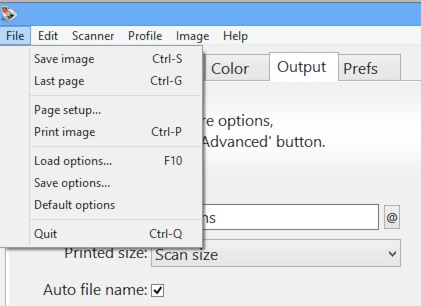Using Standard Vuescan For Mac And Converting Pdf To Ocr
Get PDFelement for Mac Here. Don't Forget to Check Potential Errors. There is no guarantee that the content on the output Excel file will be 100% accurate, due to the nature of OCR technology. VueScan 9.6.19 Crack + Torrent Here VueScan Keygen with Crack [Mac + Win] VueScan with Crack is powerful and excellent scanning software that works most high-quality flatbed. Also, this software works with film scanners. Furthermore, you can easily use it for the purpose of activation of your scanner drivers.
Output tab Output tab This tab lets you specify what types of files are written when scanning, and the file names and options for these files. The various measures of the image files produced will be displayed in the status area at the bottom right of the VueScan window. File naming and saving The Output tab has several options to specify the name of the files VueScan produces. You may either type the filename in directly, or click the '@' button to open a visual file and folder navigation window. You may specify a default folder for all file operations, but filenames may also specify the path to a sub-folder of the default (a relative path), or even a completely different location (an absolute path). VueScan can save multiple files at once. Download office for mac 2016. For example, you may want to save a high-resolution TIFF for archiving purposes or later editing, and lower quality (and size) JPEG files for other purposes.
Auto-numbering VueScan provides an auto-numbering feature that allows you to create unique filenames automatically. Depending on the task you are doing, VueScan can either use the next number in a series, or it can use the current frame number (as indicated in ) when creating a new filename. This option is available and works the same for 'crop' files (scans that have been cropped and processed) in TIFF, JPEG, PDF and OCR text formats or 'scan' files that contain the raw, minimally processed output from the scanner. If the '@' symbol is used in the file name, file names in the form 'Scan-YYMMDD-0001+' are used (where YY is the year, MM is the month, and DD is the day). The last digits are increased until an unused file name is found. Serial numbering with + Insert a plus sign (+) anywhere in the filename in order to instruct VueScan to add a number in that place if needed to create a new unique filename in the folder.

If you put one or more digits before the plus sign, VueScan will start counting from that number. VueScan finds the next available number by looking for files matching the pattern specified; one by one it adds one to the digit(s) in the name until it finds an unused filename. So if the pattern is 'crop0001+.tif' and the folder is empty, the first file will be 'crop0001.tif', the second 'crop0002.tif' and so on. You can start at any number (e.g. Note that if you delete a file from an existing numbered series, the next file saved will fill the open position. This can be useful if you want to match file numbers with exposure frame numbers or other numerical indexes.
Add leading zeros to the starting number in order to 'reserve' having filenames of the same length. If more than one plus sign (or equals sign) is specified, VueScan will ignore all but the last. Using same file name as raw files with * Use an asterix (*) for the output file name to cause the raw file name to be used. For instance, when scanning raw files with different names that aren't in numerical order, click the '@' button to the right of the option, choose multiple file names, and when you batch scan these, the output files will have the same file names as the input files, albeit in different folders and with different file extensions. Frame numbering with = Insert an equals sign (=) anywhere in the filename to instruct VueScan to insert the current value of when creating the file.
If you save the same frame more than once VueScan will overwrite the previous file (see ). If you specify a starting number, VueScan will add one less than the current frame number to the starting value. For example, if you specify 'crop0007=.tif' and the current frame number is 2, the file written will be 'crop0008.tif' (7+2-1).
This feature allows you to match the exposure number printed on the film edge to the file number of the scan. Keep in mind that will be relative to what the scanner thinks is a frame.
Your film holder frame number might range from 1 to 6, so for each new strip of 6 exposures you scan, you can set the starting number in the filename. Output Default folder This is the folder where files are read and written by default. All other file names on the Output tab, as well as will use this folder, so full paths are not required in those fields.
Standard Option: This option is always displayed. Output Printed size Use this option to select the target size of the saved images. This is used to compute the resolution of the saved TIFF, JPEG and PDF files. The dpi of the saved files will depend on the dpi produced by the scanner and the image size.